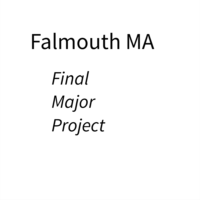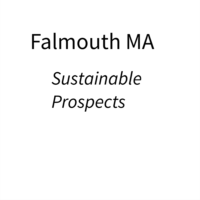Michael Wolf is a photographer to has pre-dominantly focused on creating work in a single place for him it is Hong Kong as place I have been fortunate to visit multiple times single the late 1980s. Though I viewed Hong Kong through the eyes of a businessman working abroad for short periods rather than someone who has been able to immerse themselves in the country. The other reason for listening to this talk is that Wolf has done mixed art installations mixing photographs of the environment and objects that he has found while creating his images (specifically chairs that have been repaired by their owners.)
Michael Wolf is a German photographer based in Paris and Hong Kong. His work focuses on urban life and the megacity.
Francis Hodgson is Professor in the Culture of Photography at the University of Brighton, having held positions as photography critic for Financial Times as well as Head of Photographs at Sotheby’s.
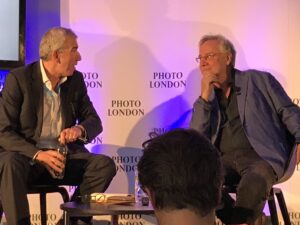
Hodgson introduces Wolf as a photographer / art practitioner who collects objects. Wolf says he is a photographer who prefers to go deep having spent 23 years in Hong Kong creating work. This is evident even from his thesis project from university where he spent a year recording images from a small mining town of 800 people that was bounded the railway track and a river creating a defined space for him to work within. Wolf described the work has having a humanist nature that pervades his future work of megacities and those that inhabit them.
He found the improvised chairs of the back alley’s mesmerising and the creative nature that owners repair them so they remain functional.
Wolf introduced the different project he has worked after he decided that he required a new direction as he recognised that income from photo journalism with Stiener was declining as the print industry started is now well documented decline. He decided to move in the direction of fine art photography and his wife gave him three years to make a success of this venture otherwise he would need to get another job to pay the bills.
The first project his discussed was Architecture of Destiny which was a series of images that show the megacity of Hong Kong. When shooting this work he made very clear decisions such as shooting images without sky so reader is surrounded by the building and there is no chance to escape the scene (Reflection: This is very different from my own landscape images where I have a clear horizon line even though I only allow the sky to occupy the top 3rd of the image.)
The next project he discussed was titled 100×100 which was a series recording the homes of people living in these dense apartment blocks. The title comes from the fact each persons home consisted of a uniform 100sq feet but each apartment was stacked alongside or on top of another 100sq feet space.
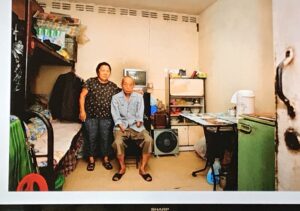
In 2007 Wolf visited Tokyo and observed the passengers on the crowded train line. This resulted in the recognised project titles Tokyo Compression. Wolf explained that the work only became powerful when he observed the condensation of the windows of the train. He returned to the same station every day for a month to shoot between 7:30 and 8:45. He return for each year for 4 years and on his last visit discovered that the overground trainline was closing and ultimately this brought the project to a close because the environment that cause the specific circumstances ceased to exist.
Similar to Tokyo Compression Wolf had a residency in Chicago for this project to used a telephoto lens to record the view in windows of office buildings. The images were all shoot at 5:30pm and 6:45pm the light made it possible to see in the windows of the offices. The time of day meant the images had a blue cast due (Reflection: The Chicago Project has the same light as I decided to capture the most recent series of images for Points of Departure. The blue hour lighting introduces melancholy into the images that for me works perfectly to give that sense of uncertainty that is present for everyone in the UK while we wait to understand the exact terms of the departure from the European Union.)
Wolf’s wife wanted to leave Hong Kong and moved to Paris which meant Wolf spent time commuting between Hong Kong and Paris. He create a couple of projects while in Paris the first was images of the roof tops of Paris, though he refused to shoot on the streets of Paris for fear of being sued by people that might accidentally appear in his images. Instead he created a series of images using Google Streetview shooting images from his computer screen. The work therefore has the distinct moire we sometimes observe when recording computer screens with a camera.
When Wolf was a child his father would make his son wonderful wooden toys though at the time Wolf wanted the plastic toys that his friends would get as gifts. Wolf as a adult visited a shop and brought a back of plastic toys for a few dollars. This fascination resulted in him created a large installation using 20,000 plastic toys and them inserting images of the people who manufacture the toys into installation.

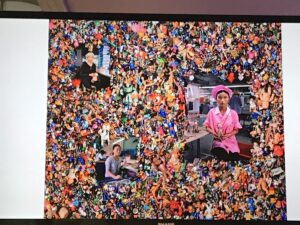
He went on to work on a project about fake art on the Hong Kong China border there is a community of a 1000 artists who make fake works of art. Wolf decided to get these artists to create pieces for him and then he would record them in an environment with their piece of fake art.

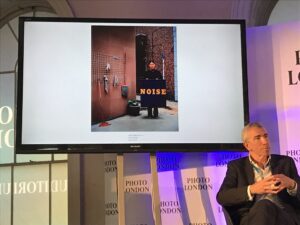
(Reflection: I particularly like this image of a fake piece of art based on Ed Ruscha work as it links to my zine Portraits of Electric Charging Stations that took inspiration from Ruscha’s book of petrol stations produced for the Strategies and Surfaces module week-13-looking-forward-research.)
Wolf shows a series of banal subjects that he finds interesting in the streets of Hong Kong.
- Gloves
- Boots
- Mops
- Flora
Hodgson asks Wolf about the power of photography. Wolf replied that pictures can create benefit of bringing awareness to a subject however they can cause harm. In China Wolf wanted to photograph a repaired chair but he was asked why he did not shoot a new chair. On one occasion Wolf shot one of his repaired chairs and when he went back later to purchase the he discovered it had been destroyed. Paying attention to a singular object can result in it being destroyed rather than preserved.
Hodgson enquired how working at Steiner had influenced Wolf’s style as the magazine required 6 images to tell a story. Wolf responded that when transitioning from photojournalism to art he did not want to create a picture like a Stiener picture. Though he did reference that Michael Schmidt had been an influence in the development of his style as you never wanted to have an important part of the picture in the gutter.
Hodgson asked Wolf about his relationship within German art. Wolf mentioned that in Germany it is very hierarchical and if you did not come from the Dusseldorf School you would not be considered as producing the right type of work.
Wolf comment that art provided him with freedom to create work that he loved and fortunately people like his way of seeing images which resulted in sales. Overtime Wolf has started to introduce objects into the installation such as the chairs that Wolf had purchased when shooting them in Hong Kong. Wolf considered the chairs a metaphors for China. a nation that is thrifty and does not throw anything away.
Hodgson comments that Wolf has swopped the mass market for a small audience however he has been successful in that transition. Wolf he feels is difficult to define as he has many facets anthropologist, photographer, sculptor seeing beauty in an object.
Wolf’s projects interlink though that was not part of a strategy they just naturally join together. (Reflection: This is maybe because the photographer’s voice is at the heart of the creation of their work. In my own work i can see that I return to common themes such as time though I use it different forms though during the MA the way I use the themes has become more refined as a better understand my own photographic voice.) He says it is important to trust yourself and your photographic instinct when creating work.
One of the audience asked why Wolf had gone back multiple times to the same station in Tokyo for Tokyo Compression. Wolf answered that it was because each time he thought that could create a better version of the image. Though it ultimately ended due to the closing of the station.
The talk closed.

